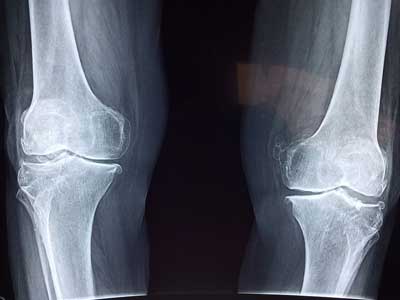Shin Pain After Knee Replacement
Shin Pain After Knee Replacement
Shin pain after knee replacement surgery is often caused by NEW bone strain.
Your new knee is placing new stress on the tibia (shin bone). Before your knee replacement you likely had a valgus or varus curvature to the knee.
One study suggests your bone will remodel and adapt to the new loading pattern over the first 3 to 12 months after surgery.
Why does my shin bone hurt after knee replacement?
Your shin bone is called your tibia. The primary reason we believe this bone hurts is because of the new loading forces being placed on the bone after your surgery.
Before surgery, your knee likely wasn’t straight.
Now, after surgery, you may not have a full range of motion yet, but the alignment of the implant is perfectly straight.
This new alignment is placing new stress and strain on the shin bone.
Your body will adapt to these new forces but it will take months and sometimes as long as a year.
What is a malalignment of the knee joint?
Before knee replacement surgery, most individuals have what is called a malalignment of the knee.
The most common malalignments of the knee include:
Varus – Bow Legged
Valgus – Knock Knees
Genu Recuvatum – Hyperextension
Flexion contracture – Lack of knee extension

How can I relieve the shin pain?
With the help of a physical therapist, you may start performing exercises designed to improve tissue healing, increase muscular strength, and improve endurance.
While there is no known exercise that will speed bone remodeling, lack of exercise and activity may slow bone formation.
A physical therapist will help you choose the right exercises that will not increase the bone pain while keeping the muscles and bones above and below the painful site healthy.
Other aspects of reducing bone pain and improving healing may include:
- Stop smoking
- Keep close management of blood sugar levels
- Stay well hydrated
- Stay active
- Perform weight bearing exercises
- Perform more frequent bouts of shorter exercise sessions
- Improve the quality of your sleep
- Eat a well rounded whole-food diet
- Consult your medical team
Which exercises make shin pain worse?
While it is impossible to say which exercises make shin pain worse some general guidelines would be to reduce higher impact activities.
Walking is an important part of any post-surgical rehab program, but you may choose to supplement walking with cycling.
Riding a bike will produce less impact through the knee and lower leg and may allow you to perform more total work per day on the knee.
Elliptical may also be an alternative to walking. The elliptical trainer allows you to remain full weight-bearing, however, since your foot never breaks contact with the pedal your knee and shin have less impact to absorb.
Here is a video about using the elliptical after a total knee replacement.

Anthony Maritato, PT
Physical Therapist
Anthony Maritato, PT has been a licensed physical therapist and private practice owner since 2006. Ohio license #PT011602.
Anthony has been passionate about helping patients recover from total knee replacement surgery as well as rotator cuff repair surgery.
